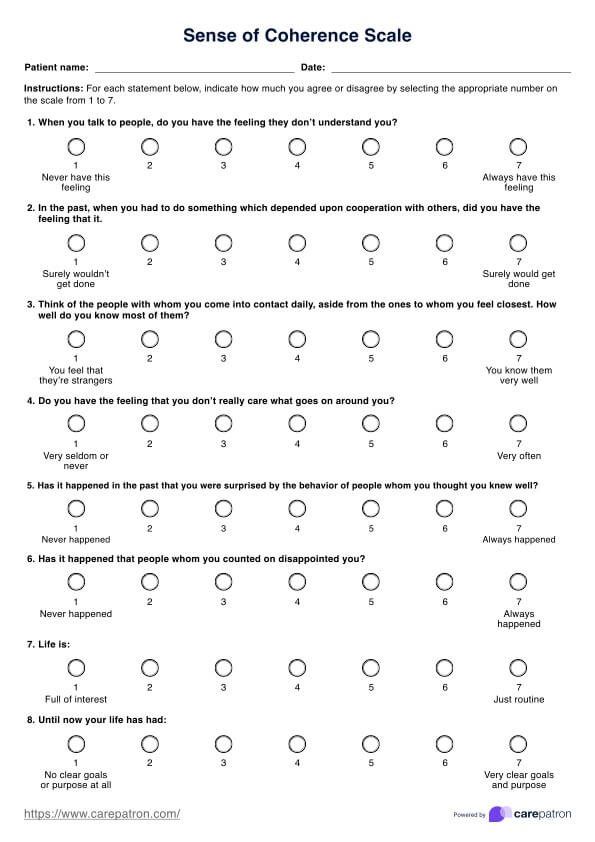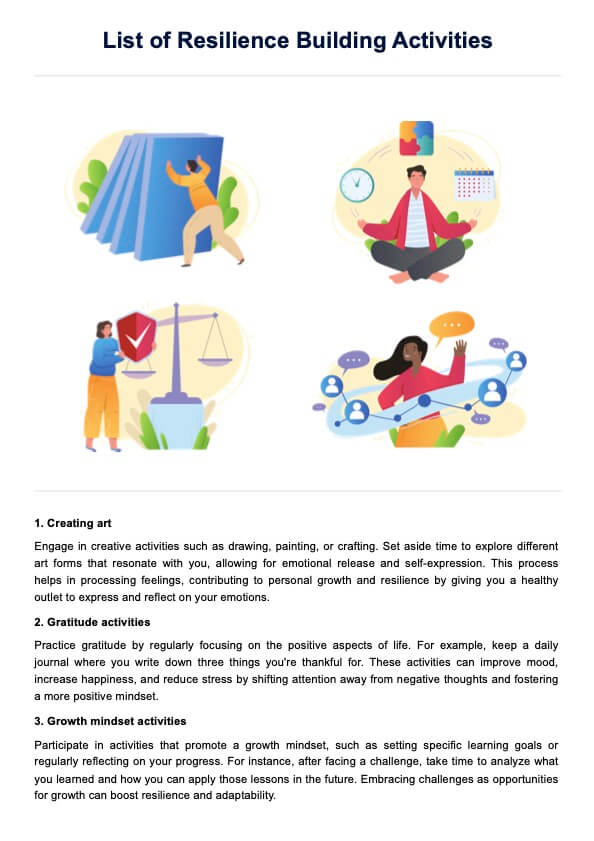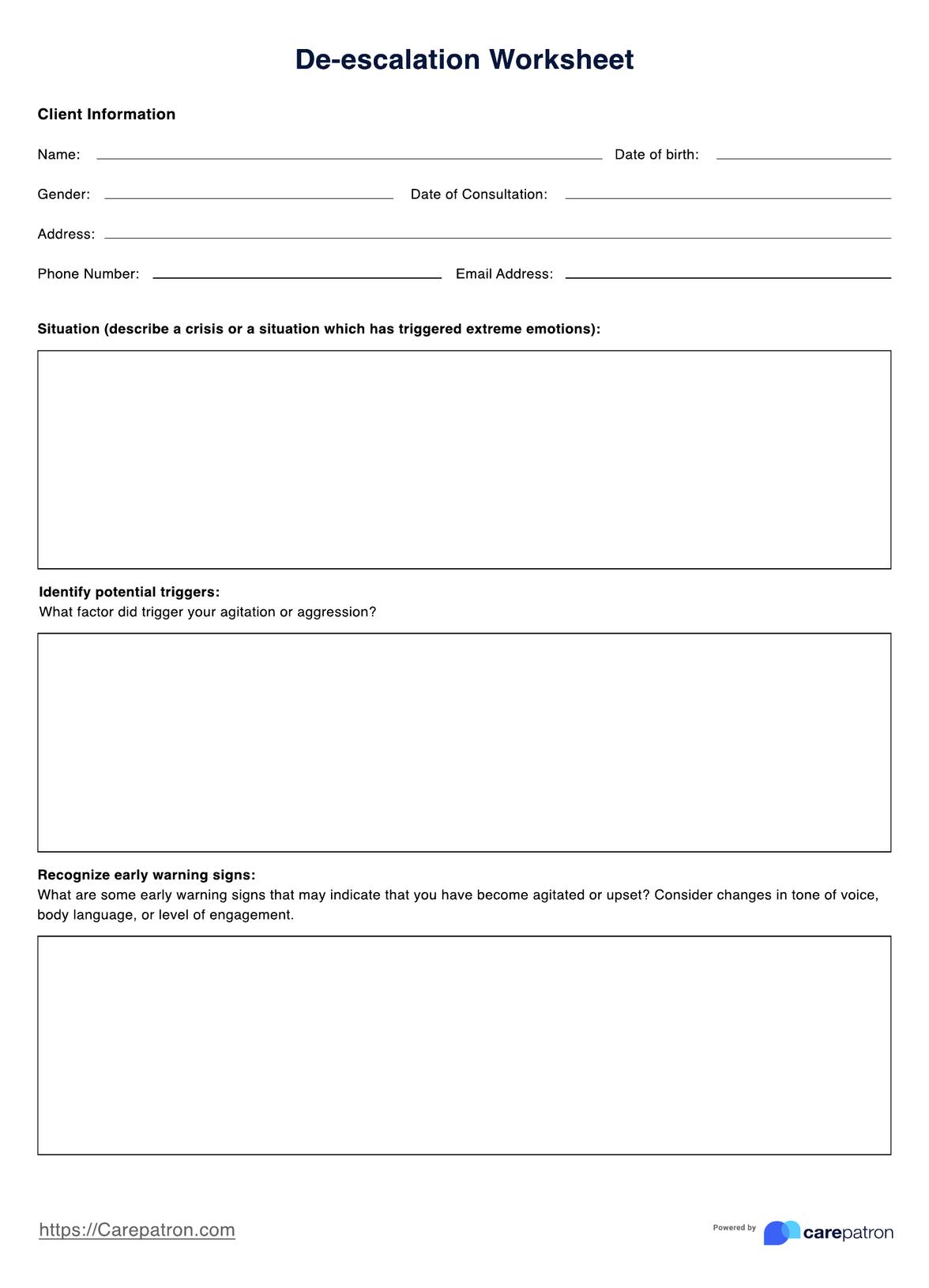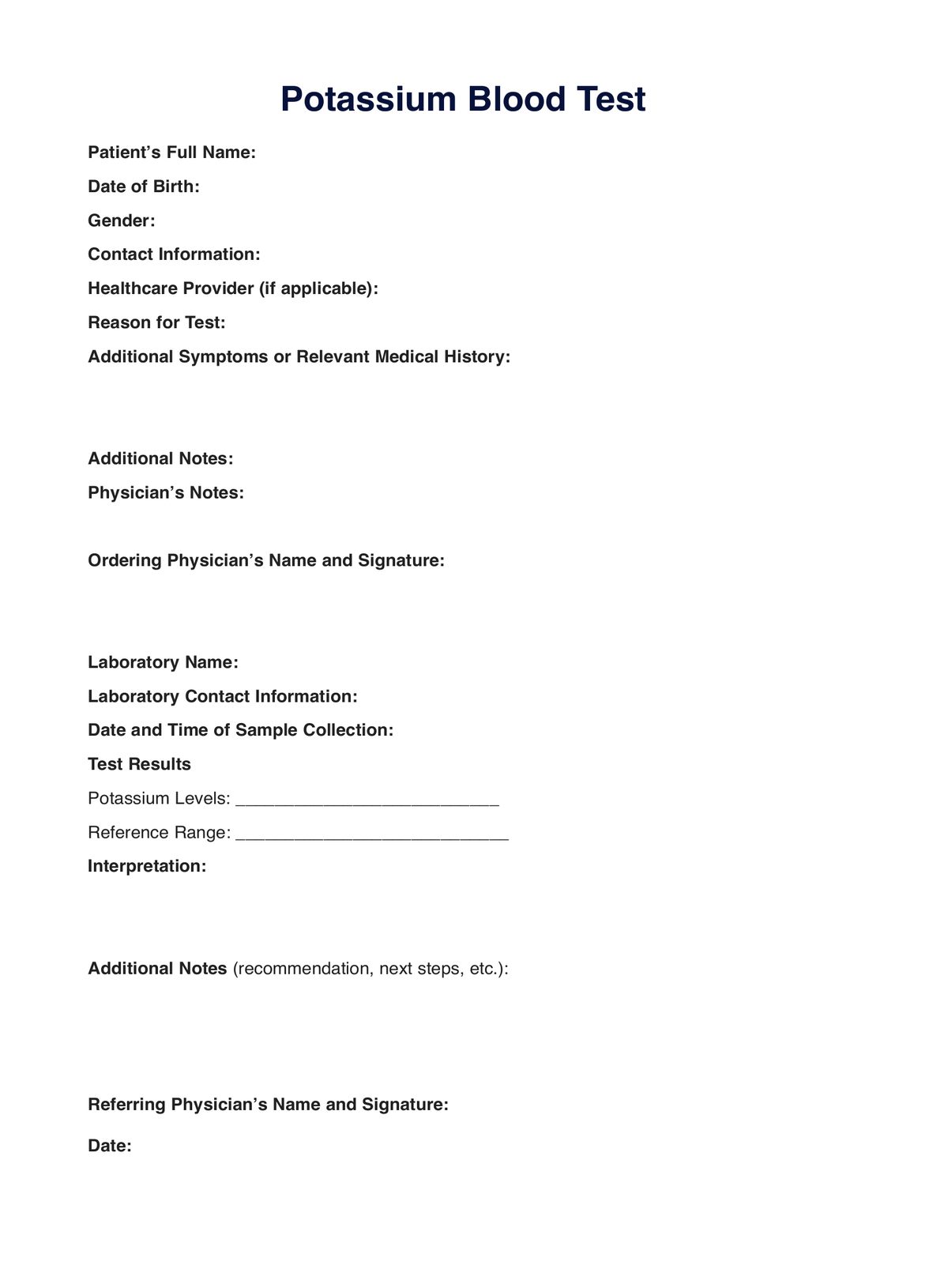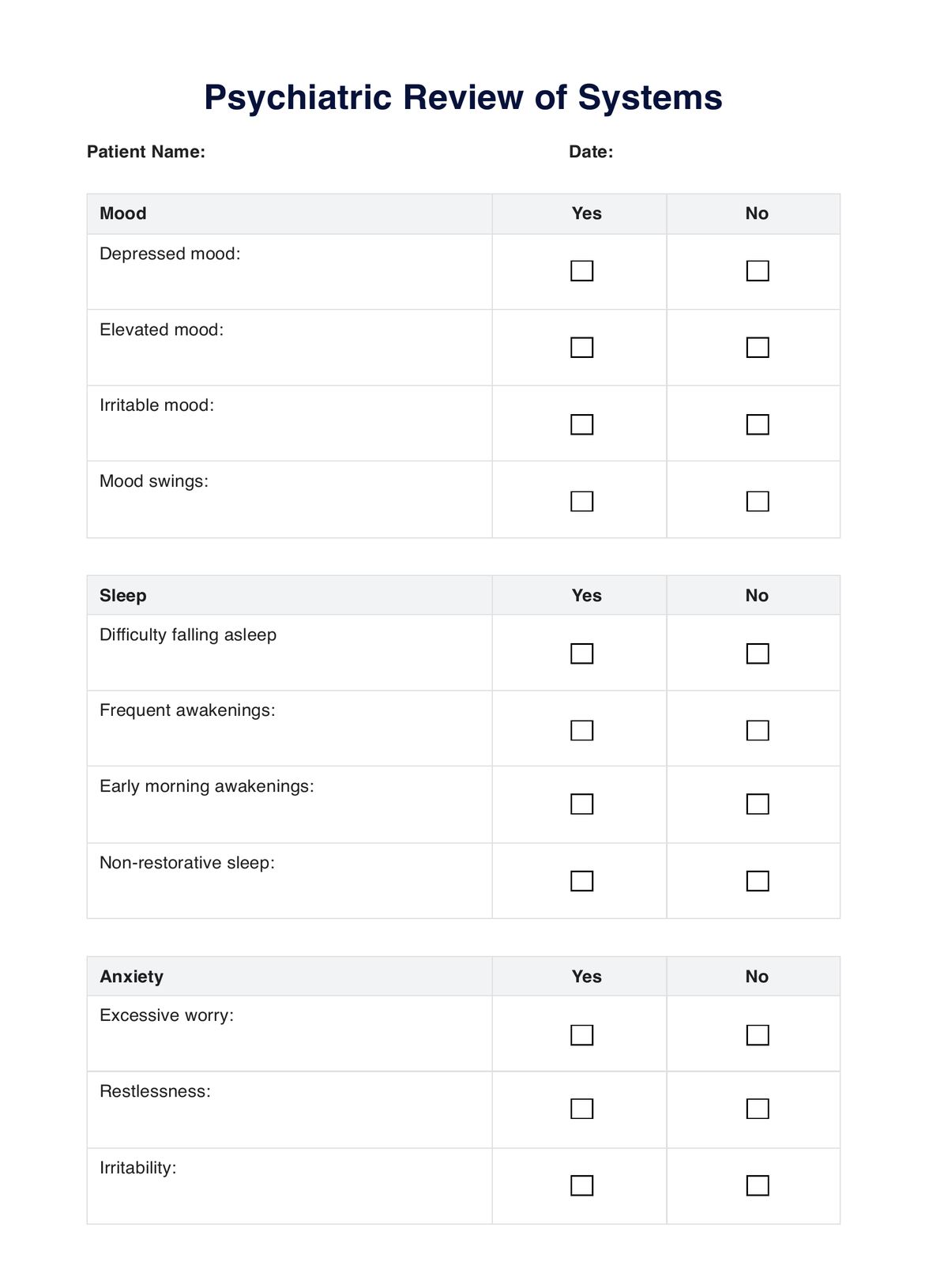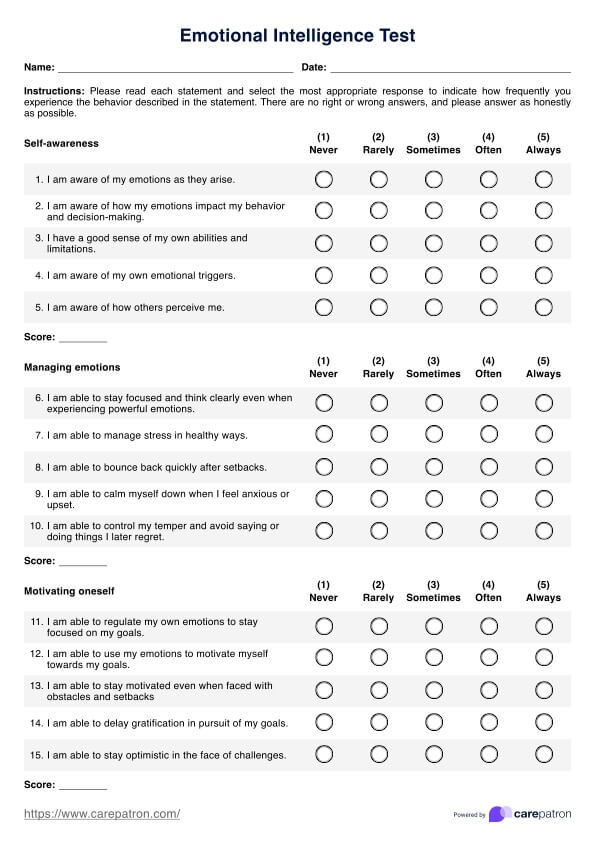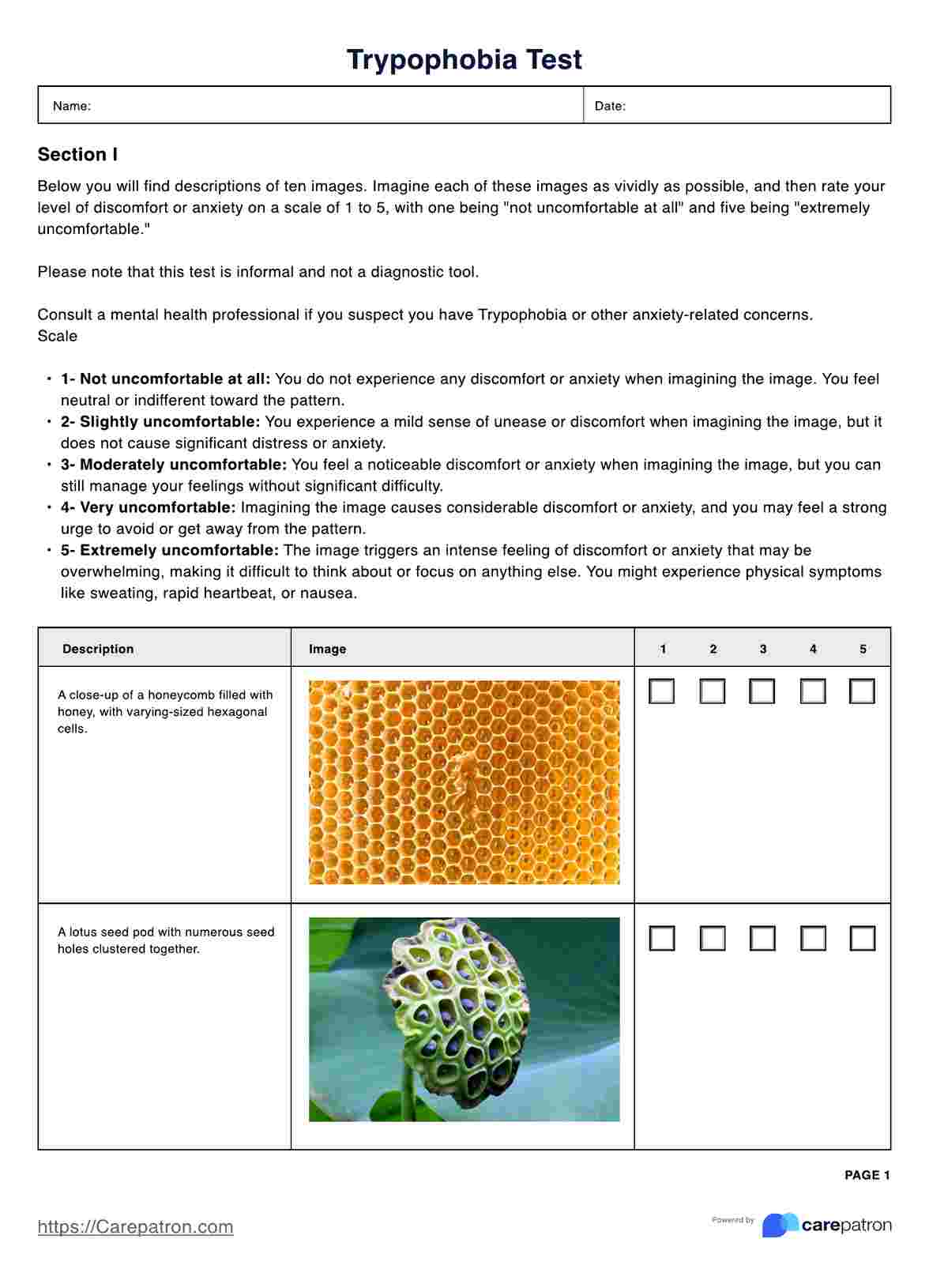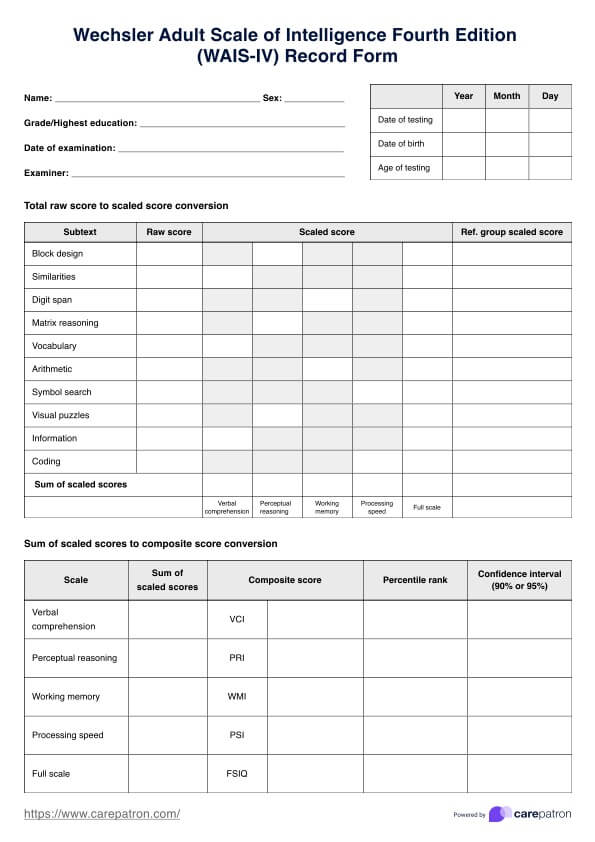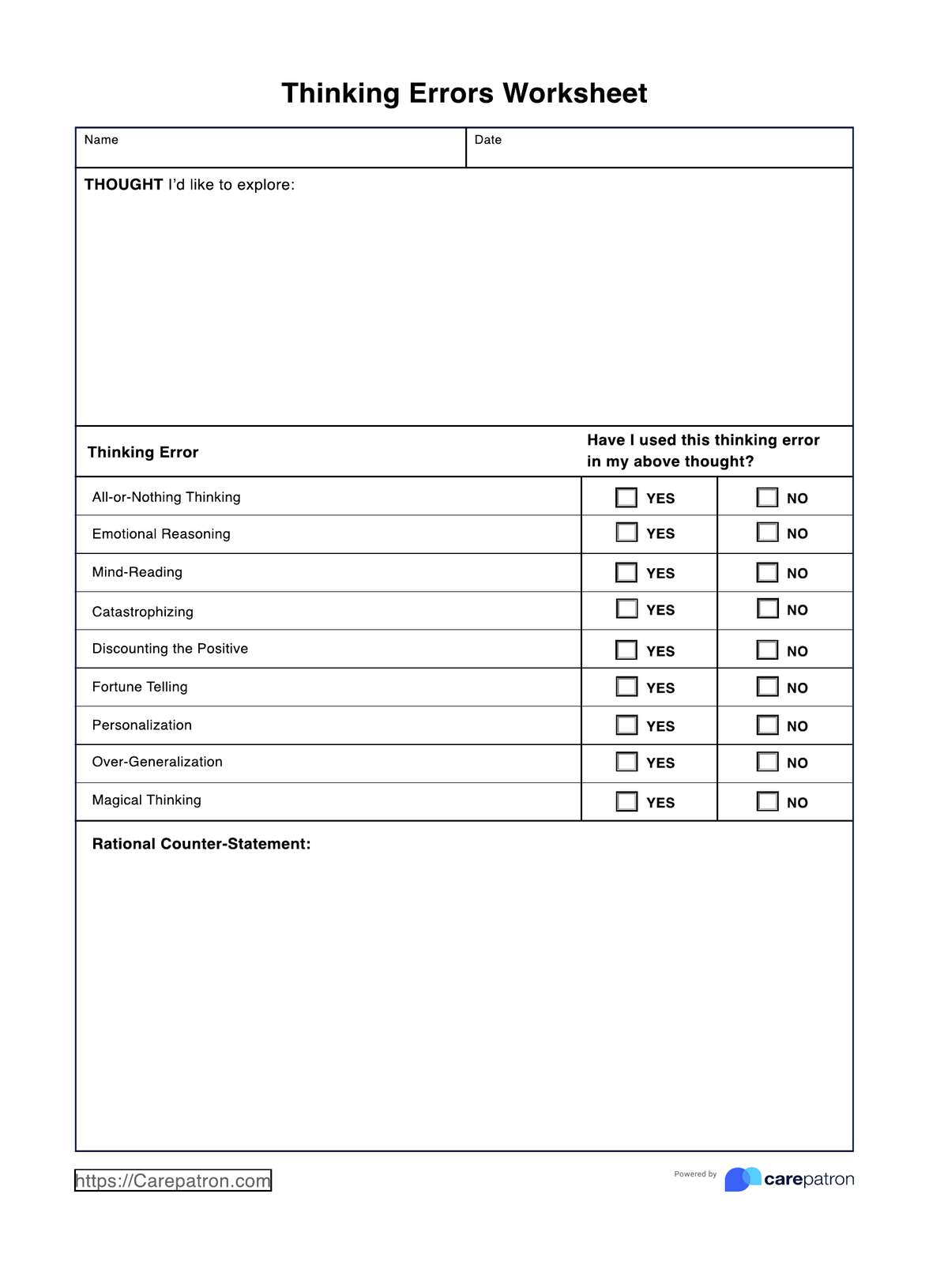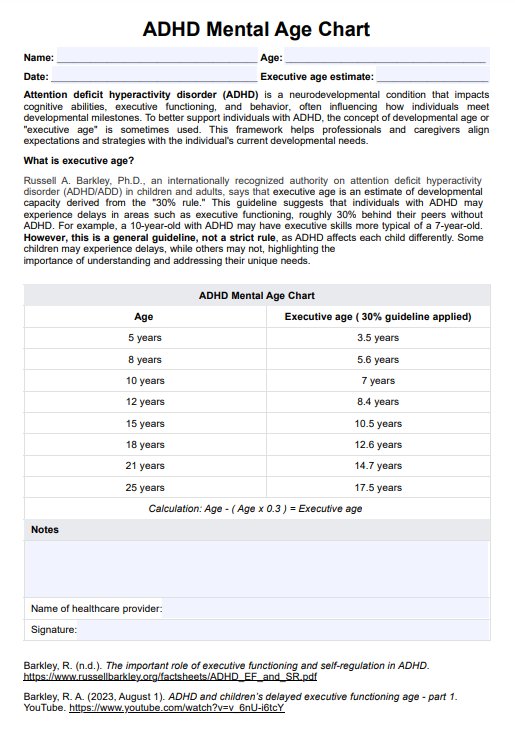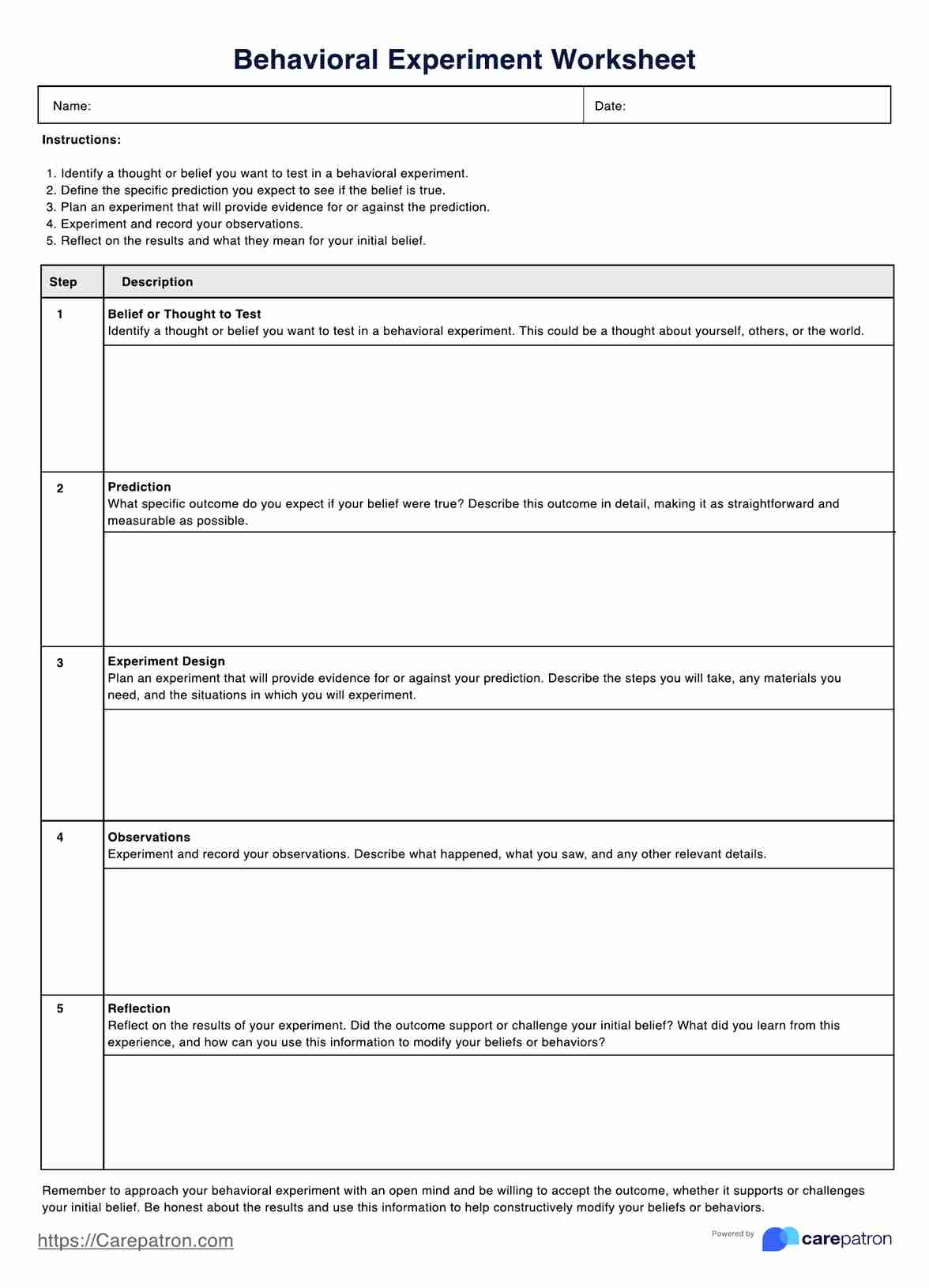Behavior Intervention Plan
Learn about Behavior Intervention Plans (BIP) and download Carepatron's free PDF template to streamline behavior management and track progress effectively.


What is behavior intervention?
Behavior intervention is a structured approach to addressing behaviors that disrupt daily functioning, such as challenging behaviors (Miller, 2022). It is among the evidence-based interventions that involve identifying the root causes of these behaviors through a functional behavior assessment (FBA) to understand why a specific behavior occurs. This process allows healthcare practitioners and educators to focus on a student’s behavior by analyzing triggers, consequences, and patterns through methods like direct observation.
Once the problem behavior is clearly identified, behavior plans are developed to replace these with appropriate replacement behaviors that meet the same need in a more acceptable way. This proactive approach not only reduces disruptive actions but also enhances the individual’s overall quality of life by promoting positive behaviors. Addressing behaviors early and effectively through evidence-based strategies is crucial for supporting long-term behavioral and emotional growth, making behavior intervention essential in educational, clinical, and community settings.
Behavior Intervention Plan Template
Behavior Intervention Plan Example
What is a Behavior Intervention Plan?
A Behavior Intervention Plan (BIP) is a written strategy developed to help address and manage a student's behaviors that are hindering their ability to learn. It is designed to stop problem behaviors by using positive reinforcement to encourage positive behavior change. An effective BIP outlines targeted interventions that aim to reduce disruptive behaviors and replace them with more appropriate behaviors.
The BIP focuses on the student’s target behavior, which needs to be addressed. The plan identifies both the antecedents (triggers) and consequences of the behavior, helping educators understand why the behavior occurs and how to manage it. By using positive behavior change strategies, such as reinforcing desirable behaviors, the comprehensive plan provides a structured approach for educators to guide the student toward desired outcomes.
Teachers, school staff, and even parents can request a BIP when a student’s behaviors impact their learning. This personalized plan tracks progress over time, ensuring that the interventions are working. The goal of a BIP is not just to stop the same behavior but to replace it with more constructive behaviors that support the student’s educational success.
How does this Behavior Intervention Plan work?
Our blank Behavior Intervention Plan template makes it easier to organize and track interventions as well as monitor your patient's progress. Follow these steps to get started:
Step 1: Access the plan template
To begin, access the template by clicking "Use template", allowing you to customize the fields and content via the Carepatron app. You can also click "Download" for a PDF version. The template serves as a comprehensive tool, outlining the steps needed for behavior assessment, intervention, and tracking progress.
Step 2: Use the plan template for planning
Customize the template by identifying replacement behaviors, choosing intervention strategies, and setting consequence plans to reinforce positive behaviors. Include a safety plan if needed, define roles and resources in the implementation plan, and set up a system to monitor progress. Finally, ensure strategies are in place for generalizing and maintaining positive behaviors across different settings.
Step 3: Discuss the components of the plan with the patient
Once the BIP is developed, healthcare professionals should discuss its components with the patient. This involves explaining the target behaviors, replacement behaviors, and the intervention strategies. Clear communication ensures the patient understands their role in the process and reinforces their commitment to achieving positive outcomes through the BIP.
Step 4: Provide further patient education and next steps
After discussing the BIP, provide the patient with additional education on how to implement the plan effectively. Guide them through the steps of the plan, including how they will track progress. Also, outline any follow-up sessions and next steps for evaluating the success of the intervention and making any necessary adjustments.
Components of a Behavior Intervention Plan
A Behavior Intervention Plan (BIP) includes seven key components designed to address specific behaviors effectively (Sugai, 1999). These components are crucial for the successful implementation of the plan and ensure that interventions are structured, targeted, and measurable.
Development of competing behavior pathway
The competing behavior pathway outlines the necessary steps to address target behaviors by identifying replacement behaviors. It involves using proactive strategies to ensure that the student adopts more positive behaviors instead of problematic ones.
Identification of intervention strategies
Intervention strategies involve teaching specific behaviors and employing proactive strategies to prevent target behaviors. This section of the behavior plan focuses on tailored teaching methods and anticipatory strategies to address specific behaviors.
Recognition of consequence strategies
Consequence strategies focus on limiting reinforcement for problem behaviors while increasing reinforcement for appropriate behaviors. The behavioral intervention plan should identify consequences that discourage target behaviors and promote positive behaviors through the use of positive reinforcement.
Development of safety plan (if needed)
In cases where certain behaviors may pose a safety risk, a safety plan is essential. The safety plan outlines steps to ensure the student’s well-being and that of others around them. It includes strategies to de-escalate behaviors and maintain a safe environment, with support staff ready to intervene if necessary, contributing to the overall success of the behavior plan.
Establishment of an implementation plan
An implementation plan sets clear guidelines on who will be responsible for carrying out the interventions. It includes designated support staff, locations where the behavior plan will be executed, and necessary resources. Successful implementation requires collaborative effort among all involved to ensure consistent application and tracking of progress over time.
Development of monitoring and Evaluation plan
The monitoring and evaluation plan focuses on data collection to track progress towards the behavior goals. It establishes methods to gather data on target behaviors and ensures that interventions are effective. Regular evaluations help modify reactive strategies if necessary, ensuring the behavior plan continues to meet the student’s evolving needs.
Identification of generalization and maintenance strategies
Generalization and maintenance strategies ensure that the positive behaviors learned in one setting are applied consistently across other environments. These strategies focus on maintaining and transferring new behaviors over time, allowing students to practice and reinforce positive behaviors across multiple settings and situations, making the behavior plan sustainable long-term.
References
Miller, G. (2022, April 8). What is a behavior intervention plan? Child Mind Institute. https://childmind.org/article/what-is-a-behavior-intervention-plan/
Sugai, G. (1999). Behavior intervention plans (BIP). In Missouri Schoolwide Positive Behavior Support Tier 3 Workbook (Chapter 6). https://pbismissouri.org/wp-content/uploads/2018/08/Tier-3-2018_Ch.-6.pdf
Commonly asked questions
An example of a Behavior Intervention Plan (BIP) is a plan designed to address a student's disruptive behavior in the classroom. It includes targeted interventions, such as teaching a replacement behavior, setting clear consequences, and tracking progress to ensure positive behavior changes.
The seven components of an effective Behavior Intervention Plan (BIP) include: developing a competing behavior pathway, identifying intervention strategies, recognizing consequence strategies, creating a safety plan, establishing an implementation plan, developing a monitoring and evaluation plan, and identifying generalization and maintenance strategies.
An Individualized Education Plan (IEP) is a legally binding document that outlines specific educational goals for students with disabilities, while a Behavior Intervention Plan (BIP) focuses on addressing specific behavioral challenges. The BIP can be part of an IEP, but it specifically targets behavior management strategies.


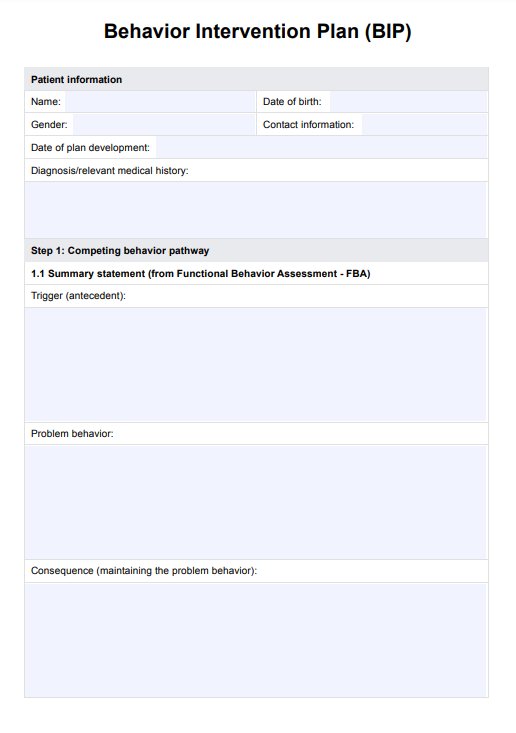
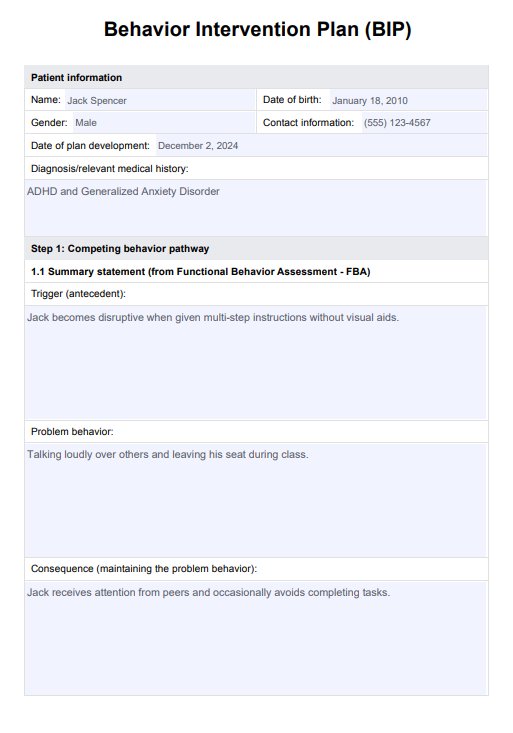

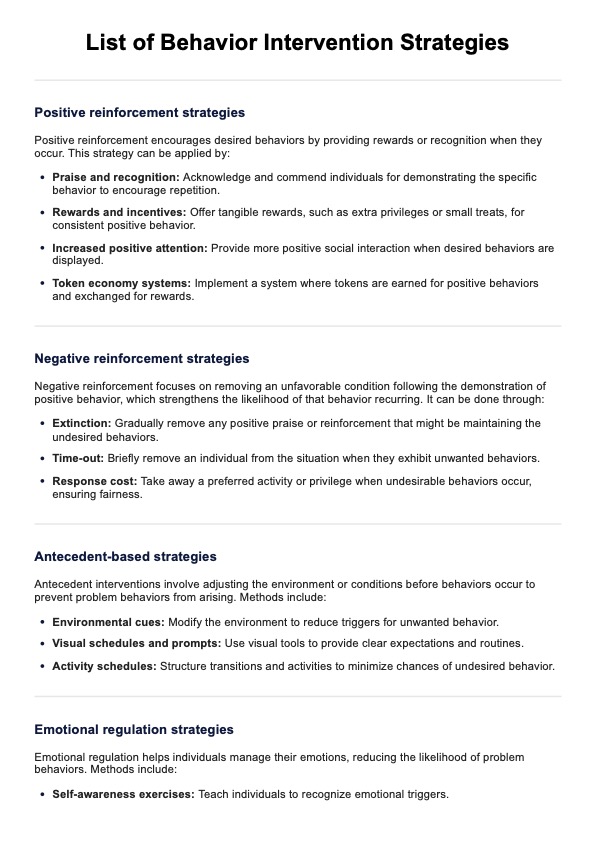
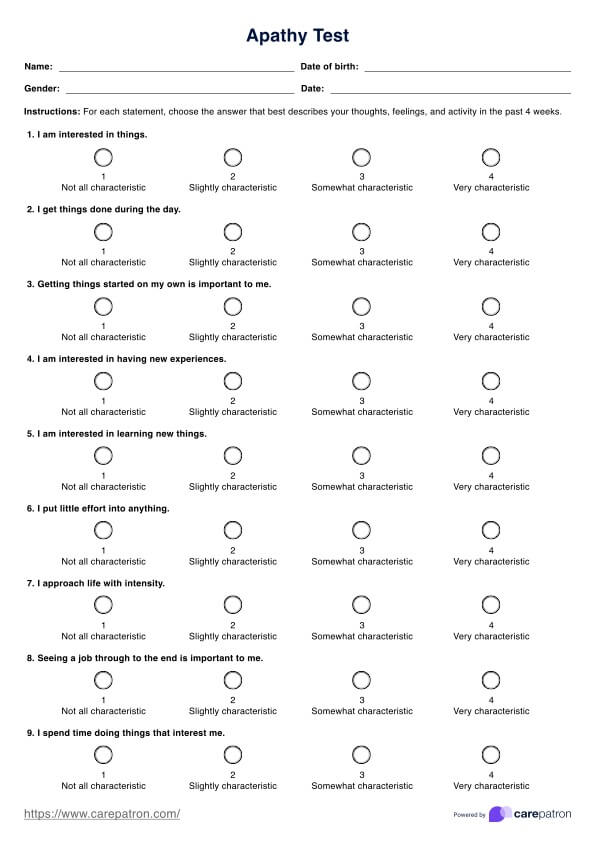
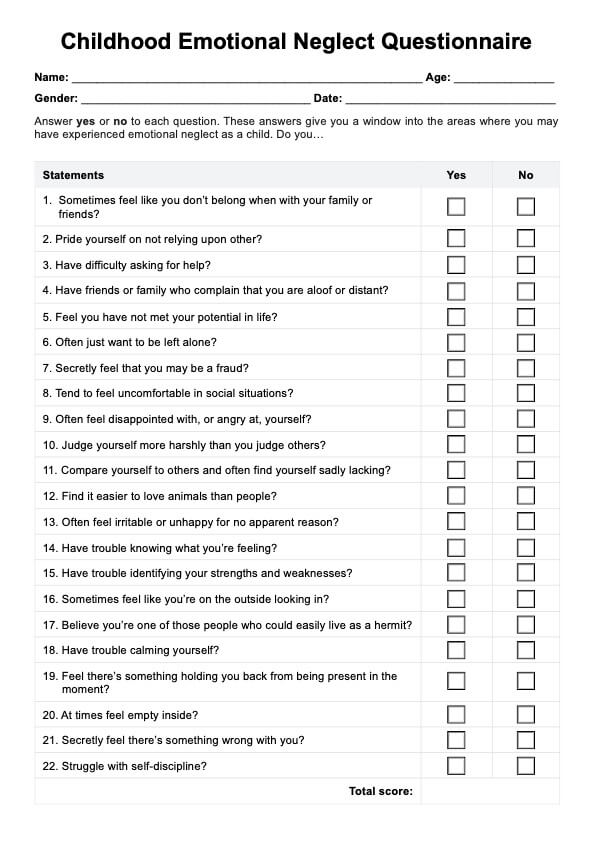
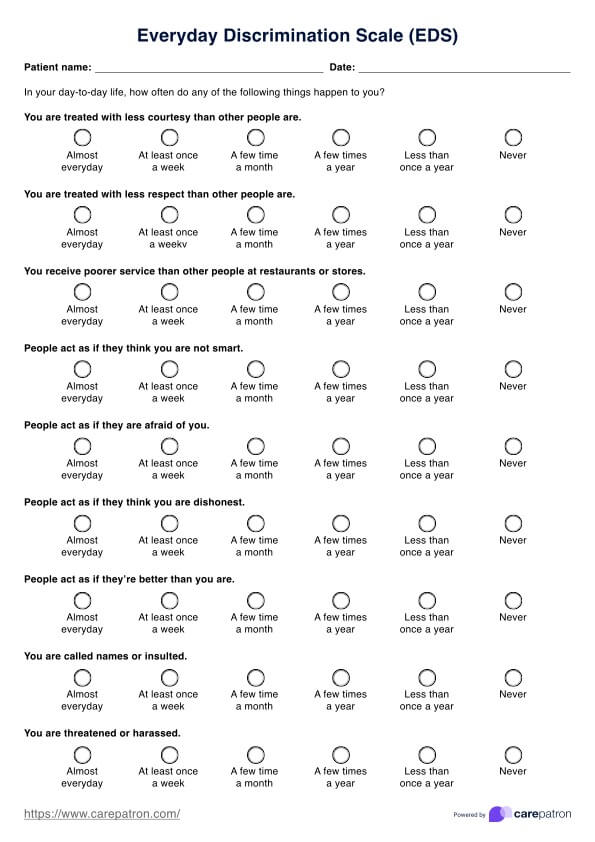










-template.jpg)




















































































